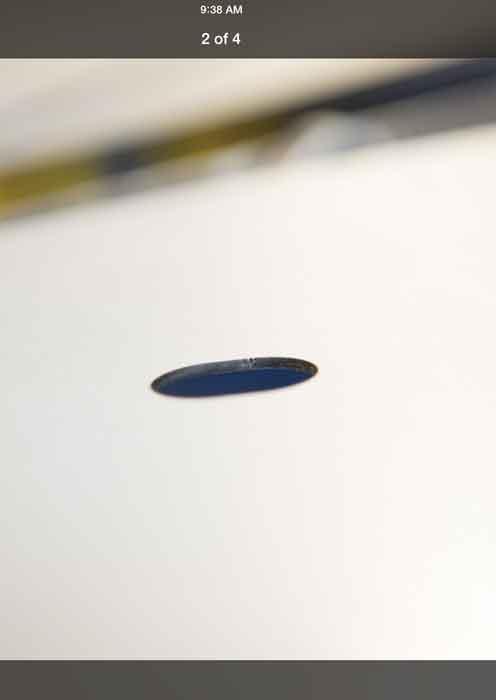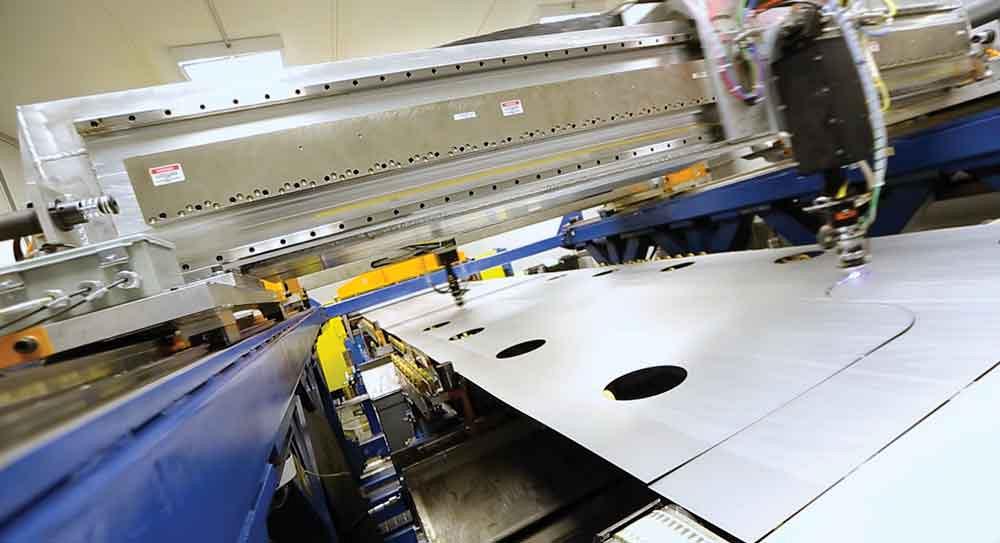General Manager/Chief Technology Officer
- FMA
- The Fabricator
- FABTECH
- Canadian Metalworking
Categories
- Additive Manufacturing
- Aluminum Welding
- Arc Welding
- Assembly and Joining
- Automation and Robotics
- Bending and Forming
- Consumables
- Cutting and Weld Prep
- Electric Vehicles
- En Español
- Finishing
- Hydroforming
- Laser Cutting
- Laser Welding
- Machining
- Manufacturing Software
- Materials Handling
- Metals/Materials
- Oxyfuel Cutting
- Plasma Cutting
- Power Tools
- Punching and Other Holemaking
- Roll Forming
- Safety
- Sawing
- Shearing
- Shop Management
- Testing and Measuring
- Tube and Pipe Fabrication
- Tube and Pipe Production
- Waterjet Cutting
Industry Directory
Webcasts
Podcasts
FAB 40
Advertise
Subscribe
Account Login
Search
The case for laser blanking in automotive stamping
6 considerations why laser blanking is an alternative for stampers using transfer, single, and tandem presses
- By Jay Finn
- March 19, 2020
- Article
- Cutting and Weld Prep

Blanking is probably the harshest and most violent press operation. Laser blanking is an alternative for stampers using transfer, single, and tandem presses. Images provided
Blanking is probably the harshest and most violent press operation. The ram force must be at its highest to break through metal. The breakthrough force can wreak havoc on both the press and the die, leaving burrs, work-hardened edges, and distortion in its wake.
The effects grow even greater with harder high-strength steel and aluminum grades.
While progressive die operations continue to perform blanking as the first stage of the operation, stampers using transfer, single, and tandem presses for forming can opt to perform the blanking as a laser cutting operation.
1. What are the best applications for laser blanking in a stamping manufacturer’s plant, especially for the automotive segment?
Accounting for tooling costs for model change cycles of six years or less, as well as the increased material utilization, laser blanking makes sense for volumes up to 100,000 units per year. For model volumes of 60,000 units per year or less, laser blanking makes sense right from the beginning of the initial vehicle launch given the ability to eliminate the blanking die cost as well as the tooling maintenance.
In terms of the aftermarket, laser blanking is a slam dunk because it eliminates slitting coils to fit master dies as blanks can be nested efficiently in any coil width. It also eliminates the preparation associated with preparing and reconditioning dies that have sat idle over a period of time between uses.
2. What speeds can a stamper expect to achieve?
There is no one answer. Many laser blanking systems have a modular design that allows multiple heads to be integrated so that the system can be configured to the stamper’s requirements.
Typical outer body parts, as most are currently arranged, can run 12 to 25 strokes per minute (SPM) on a two-head configuration. Complex body sides tend to run in the 4- to 6-SPM range. Some stampers have reconfigured the blanks to increase production rates, enabling them to produce parts in the 30- to 40-SPM range. This, however, often comes at the cost of material utilization and additional trimming in the forming dies.
Thicker inner structural parts typically run in the 6- to 10-SPM area, but configurations with six laser cutting heads will increase this rate to 30 to 40 SPM.
3. What are the optimal materials and material thicknesses for laser blanking?
All grades of steel and aluminum are excellent candidates for laser blanking, as well as some exotic materials. As laser technology continues to advance at an incredible pace, other materials become viable as cutting parameters for different material—such as laminated material and composites—and gauges are developed. The thicknesses usually are from 0.02 inch (0.5 millimeter) to 0.14 in. (3.5 mm) because most coil-fed laser blanking systems are set up with coil feed lines and fiber lasers. But as laser and leveling technology continues to grow, material gauges even thicker than 0.19 in. (5 mm) are run.
4. Press blanking results in localized work hardening and several distinct edge zones. How is a laser-blanked edge condition different?
Laser-cut blanks have a heat-affected zone (HAZ), which is the area from the laser-cut edge into the blank. However, with today’s increased laser cutting speeds, the HAZ has been significantly reduced. For material 0.08 in. (2.0 mm) and thinner, that zone is less than 0.008 in. (0.2 mm). The hardening within that zone is less than for mechanically cut parts, and the distance from the edge to the unaffected area is significantly shorter.
Mechanical blanking the newest high-strength steels (HSS) and high-strength aluminums (HSA) used in vehicle lightweighting efforts produces microfractures all along the blank’s shear edge. This often results in high reject rates for blanks in the forming process. Laser blanking eliminates this problem.
5. How is the blank’s skeleton removed?
Different laser-blanking-from-coil systems offer various methods for part removal and scrap separation. In most systems, the finished blank is picked by a robot or stacking gantry from the coil strip, leaving the skeleton behind to be dealt with. Some systems offer the ability to remove smaller pieces of scrap upstream.
Yet other systems provide scrap removal during the cutting process, regardless of the blank configuration. This type of system allows for the use of conventional-style stacking to be integrated into the system, even with developed blanks. Some offer the ability to operate in any or all of these modes.
6. What are some best practices?
It is important to match the cutting parameters with the edge quality and tolerance needed for the finished blank. The flexibility of laser blanking systems to quickly modify the parameters for different features is a huge improvement over what has to be done to make these same changes on a mechanical die.
Also, dust collection is a critical part of keeping the finished product clean. It is essential that dynamic airflow analysis be done to ensure that the movement of dust and fines produced during the laser cutting process do not end up on the blank’s surface.
About the Author

Related Companies
subscribe now

The Fabricator is North America's leading magazine for the metal forming and fabricating industry. The magazine delivers the news, technical articles, and case histories that enable fabricators to do their jobs more efficiently. The Fabricator has served the industry since 1970.
start your free subscription- Stay connected from anywhere

Easily access valuable industry resources now with full access to the digital edition of The Fabricator.

Easily access valuable industry resources now with full access to the digital edition of The Welder.

Easily access valuable industry resources now with full access to the digital edition of The Tube and Pipe Journal.
- Podcasting
- Podcast:
- The Fabricator Podcast
- Published:
- 04/16/2024
- Running Time:
- 63:29
In this episode of The Fabricator Podcast, Caleb Chamberlain, co-founder and CEO of OSH Cut, discusses his company’s...
- Trending Articles
Capturing, recording equipment inspection data for FMEA

Tips for creating sheet metal tubes with perforations

Are two heads better than one in fiber laser cutting?

Supporting the metal fabricating industry through FMA

Omco Solar opens second Alabama manufacturing facility

- Industry Events
16th Annual Safety Conference
- April 30 - May 1, 2024
- Elgin,
Pipe and Tube Conference
- May 21 - 22, 2024
- Omaha, NE
World-Class Roll Forming Workshop
- June 5 - 6, 2024
- Louisville, KY
Advanced Laser Application Workshop
- June 25 - 27, 2024
- Novi, MI




























